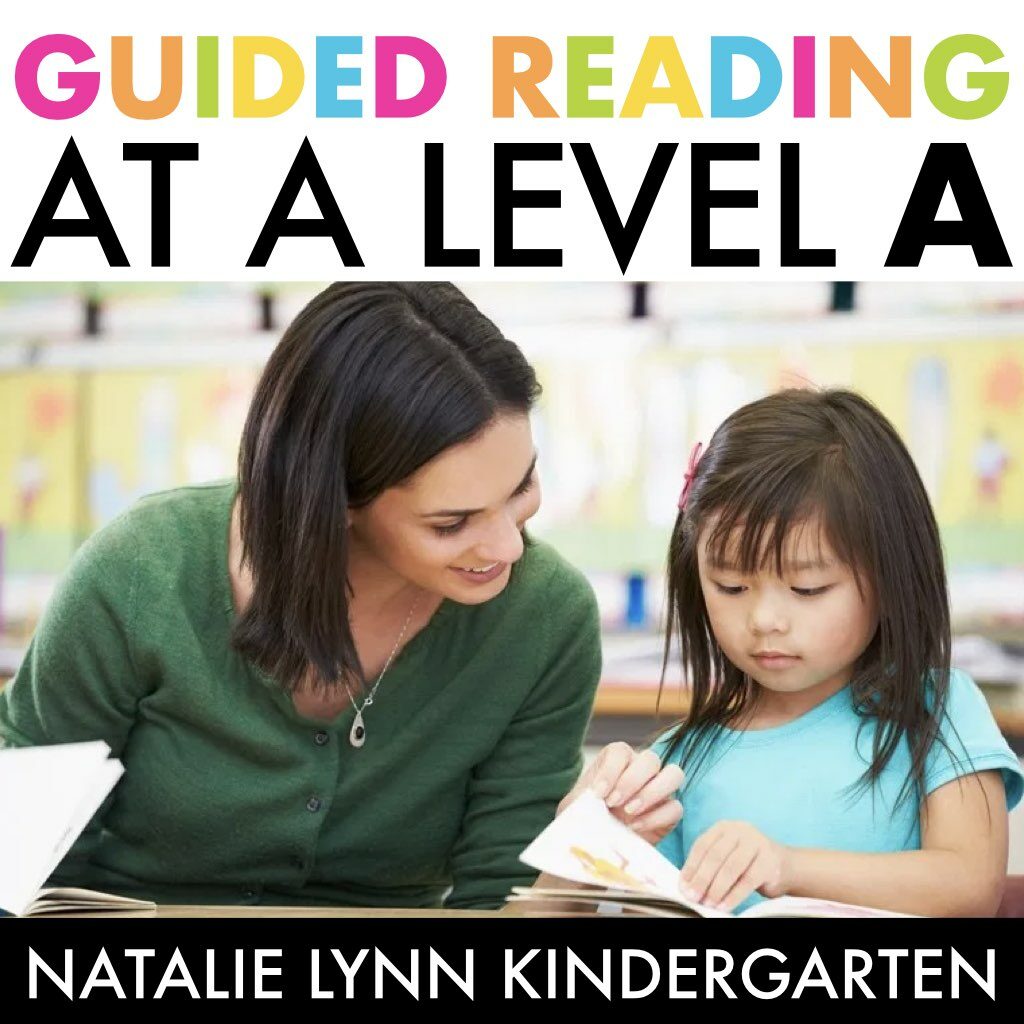
This blog post will walk you through the characteristics of Level A readers, what to include in a Level A guided reading lesson, and activities for emergent readers.
It’s such an exciting feeling – your kindergartners are ready to begin reading! But.. what do you do now? What are the best guided reading practices for working with Level A emergent readers?
A level A guided reading lesson will include activities to build independent readers. You will teach your students reading strategies, decoding strategies, comprehension skills, word work skills, and emergent writing.
I know; it sounds like a lot!
It doesn’t have to be complicated, though. This blog post will walk you through what you should include in your Level A guided reading lesson plan and how to make the most of your time.
What Are Emergent Level Readers?
Emergent level readers are students at a level A-C reading level. They are just beginning to read simple text. At the emergent reading level, it is most important to work on word work skills, sight words, and teaching students to decode and problem solve so that they can begin to read less patterned text at higher levels.
Level A readers are our students who are past the Pre-A guided reading stage. These students understand concepts of print. They know some sight words and some letter sounds.
What To Work On With Your Level A Guided Reading Groups
Before you begin planning your kindergarten guided reading groups, I suggest assessing your students a few different ways. The first assessment you should do is a cold read of a level A text.
A cold read means that the student is reading a book or leveled passage that they have never been exposed to before. As they are reading, you will take a running record.

Pay attention to mistakes students are making – are they paying attention to the picture but not the words, are they afraid to make mistakes, are they tracking the words or are they making it all up completely?
This running record will give you the teaching points you will want to focus on with your kindergarten guided reading group.
You will also want to assess your kindergarteners on letter ID, letter sounds, and sight words. These will also be a focus of your guided reading lessons.
What To Plan For Your Level A Guided Reading Lesson
Now that you have assessed your students, you can begin planning your emergent guided reading lesson. Even if you have multiple small groups at this level, each group will most likely need different teaching points and lessons. I suggest grouping your students by what skills they need to work on.
Before my students move on to a level B lesson, I want them to be secure in letter sounds. I try to begin every lesson with a quick guided reading warm up.
The guided reading warm up I use most often is our alphabet chart routine. Each student has an alphabet chart. Together, we point to each letter. I say the letter, the picture, then the sound (a, apple, /a/). Then, students repeat after me.
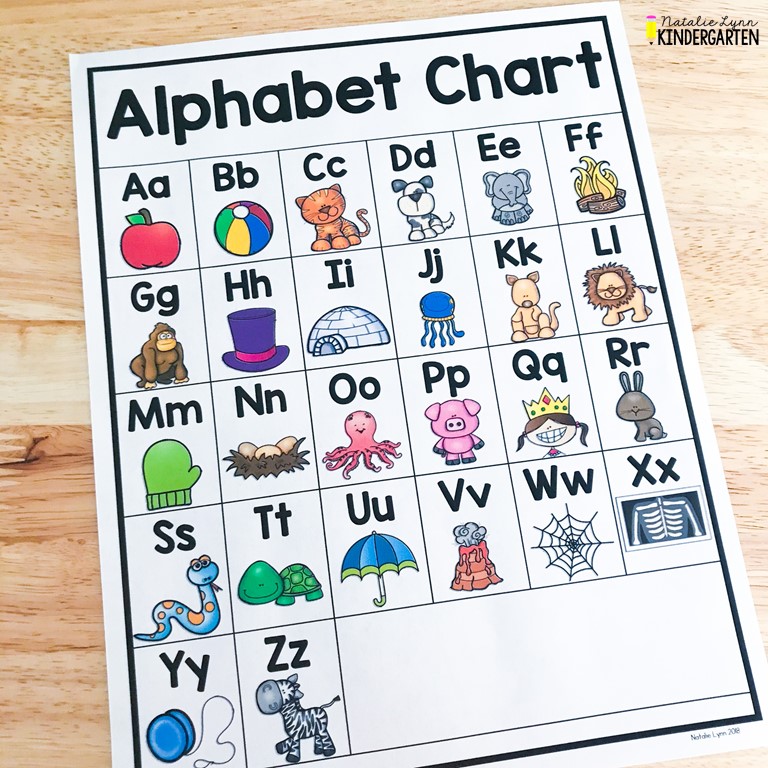
This is a quick guided reading routine, but it will give you a lot of bang for your buck!
This is also when I assess sight words quickly. I choose 3 sight words that we have previously learned and have students write each one as quickly as they can on their white board. I keep a list of sight words and just mark if each student got that word right or wrong. This tells me if we need to go back to that word.
Before Reading
You will want to have a quick teaching point before your students read. As you listen to students read, you will listen to see who is applying this teaching point and who needs a re-teach in the moment.
Some teaching points you may focus on in your Level A lesson:
- Pointing to each word and making sure you ONLY read what is on the page (If it has 4 words, I’m not going to say “I like to ride my bike down the sidewalk”).
- How can I help myself if I get stuck?
- Checking the first sound of unknown words
- Thinking, Does this makes sense?
- Going back to reread
- Stopping to think about what I read
You will want to choose only one teaching point each lesson. Any more will be overwhelming.
Before you read, you will also want to introduce the book. Show students the book and tell them what it is about.
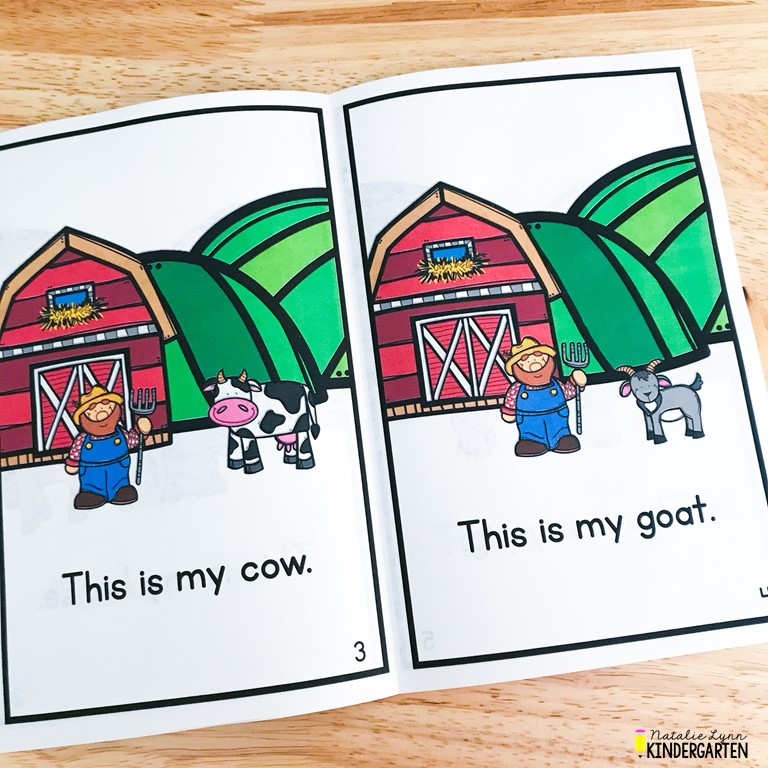
We also go over vocabulary words in the book. You can do this by doing a picture walk, which is where you go through the book together and discuss the pictures, but do not read the words. You can also simply talk about the words.
If our book has a new sight word that we will be working on, we also quickly introduce that word. I will have students turn to a random page. I will call out a sight word and have students use their finger to “frame” that word. Start with the words your students know and then have them find the new word. This just helps students realize that the sight word will be in the sentence.
Guided Reading with Level A Emergent Readers
Now it is time to read! Students at this level will be reading level A guided reading books. These books are very simple and patterned.
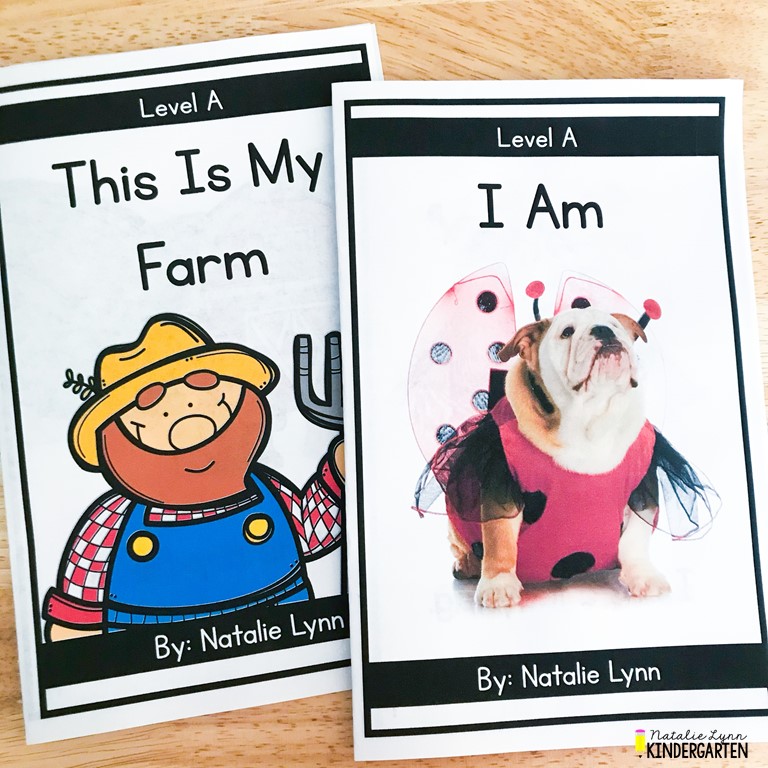
Generally, these books have sentences that are 3-5 words long. The sentences are usually made up of beginning sight words and one picture word. Level A emergent readers follow the same pattern on every page and the pattern does not change.
We will read a book for two days. The first day is to focus on reading strategies and comprehension. The second day focuses on fluency, comprehension, and guided writing.
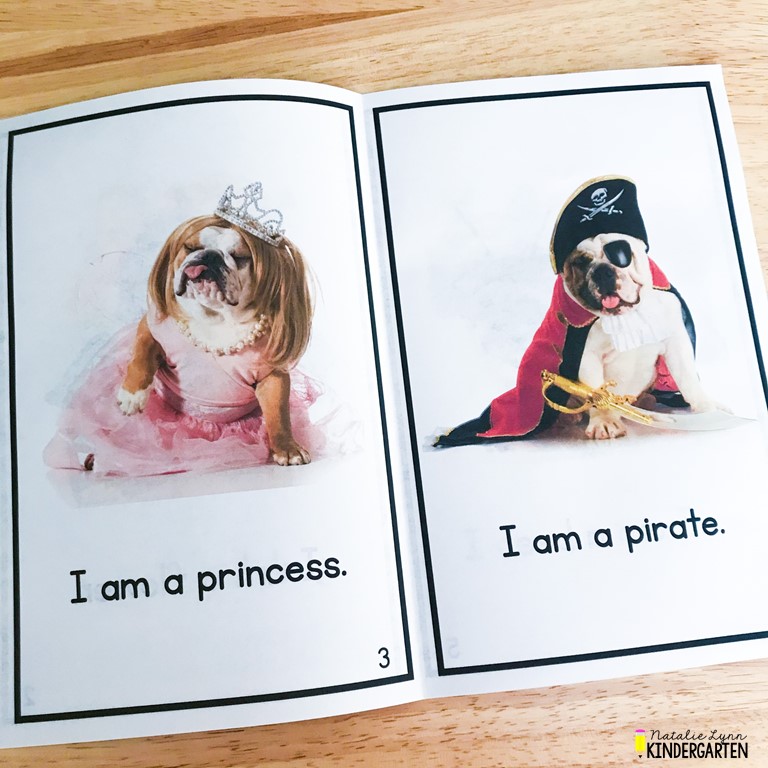
In our emergent guided reading lessons, we do not choral read or round robin read. Why? Because your students aren’t doing the work then, they are relying on you or the rest of the group.
Your students need to be doing the work to see the benefits. When it is time to read, I have my students point to the words and whisper read to themselves. Whisper phones are a great invention for this, but not required.
As students are reading, I listen to one student at a time and take a quick running record on my lesson plans or write notes. This is also when I would re-teach a specific problem solving strategy if a student needs it.
If a student or group is struggling to move beyond this level, think about who is doing the work. Are you constantly jumping in to prompt students and remind them of a strategy they should be using?
Our job during guided reading is to grow independent readers. An independent reader will think what is the problem and how can I solve it?
Instead of prompting students with specific strategies, try using open-ended prompts like:
- What can you try? – You have already taught strategies as mini lessons. Now you want students to be able to apply these strategies independently. Let them think about what they can try.
- How do you know? – Your student tried a strategy. How do they know that this word fits in the sentence? Did they check the picture? Think about what makes sense? Did they see a sound chunk they know?
- How did you figure that out?
- You tried ___. How can you check to see if you are right?
After Reading
If a student finished the book during our independent reading time, I prompt them to read it again. I remind them that great readers reread books over and over again so that they know the story by heart.
When our independent reading time is over, we discuss what happened in the book. Some reading comprehension prompts you may use:
- What happened in this story?
- What happened in the beginning, middle, end?
- Does this story remind you of something?
- What was the setting? Who were the characters?
Emergent pattern books don’t have much of a plot, but they are perfect for working on retelling and sequencing.
Level A Word Work
Level A readers will most likely be working with letter sounds and beginning sounds. For our kindergarten guided reading group, I choose one focus letter that the majority of the students in the group need to work on.
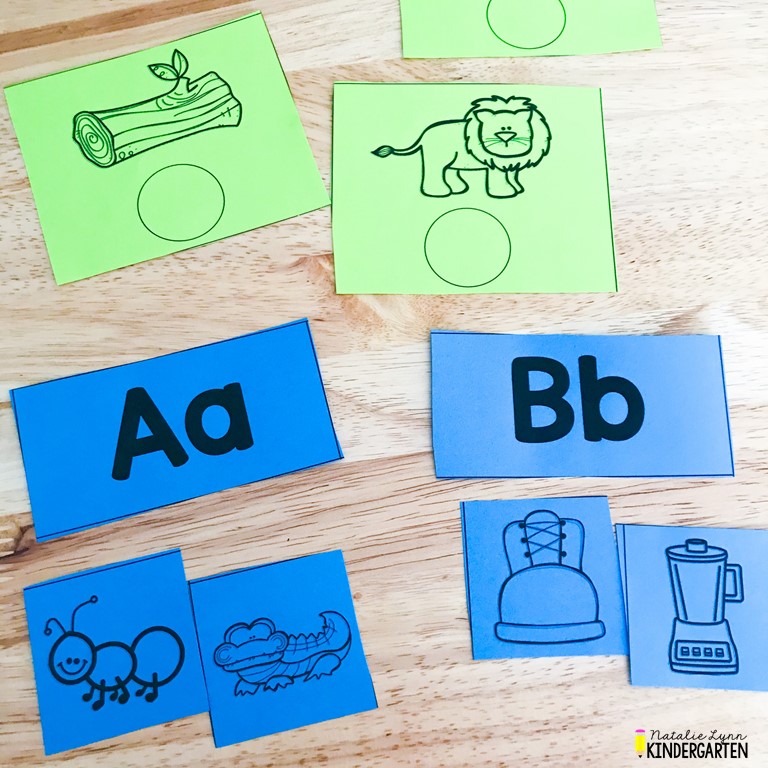
Beginning sound sorts are one of my favorite level A word work activities. For this, you will choose your target letter and then one letter sound that the majority of the group knows well.
We go over the two letters and their sounds. I draw a T-chart for the two letters on a white board. Then, I give each student 2-3 pictures.
We go around the table and each student chooses one of their pictures, says the first sound, and places it under the correct letter. When all the pictures are sorted, we say them all the way we would say our alphabet chart – l, lion, /l/; l, leaf, /l/.
Level A Sight Word Practice
We choose one sight word to focus on for each small group. This sight word may be our focus word for multiple small groups. It will be our focus until the majority of students have mastered it.
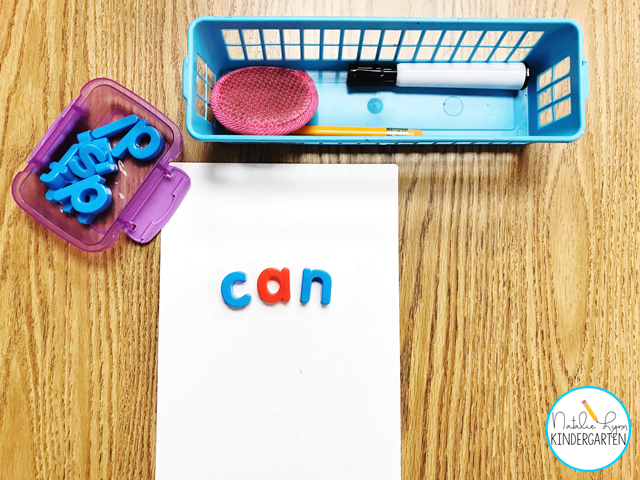
You can read a step-by-step of our guided reading sight word routine here.
Guided Writing with Level A Students
Our guided reading lessons follow a two-day plan. On day two, our independent reading time is short so we have time to do guided writing.
For guided writing, I will choose a 3-5 word sentence. I usually use the pattern from our guided reading book. Generally, I let students choose their own picture word.
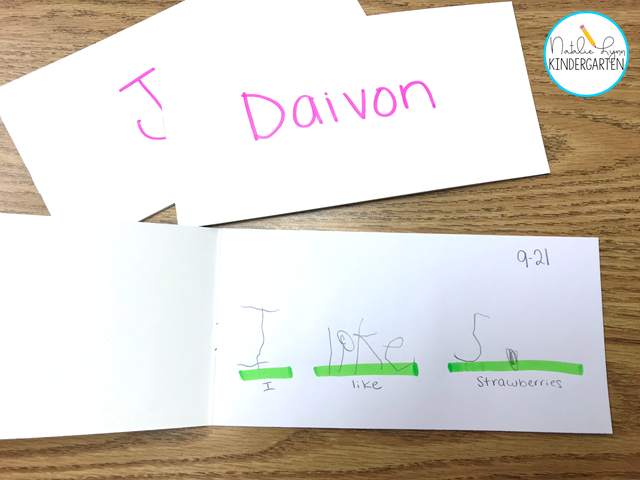
Then, I draw guided writing lines for each student. I have them tap each line and say the sentence before they begin writing.
As they are writing, I prompt them to go back and tap the lines as they reread. This helps them if they forget the sentence or skip a word.
When they get to the unknown word, prompt students to listen for the sounds they hear. At level A, students may only hear the beginning sound and that’s okay! They can write just that letter.
I will write the correct words under their sentences for my own records, but I never do this in front of students.
You can read more about our guided writing routine here.
Want Your Level A Guided Reading Groups Already Planned For You?
My Level A guided reading unit contains everything you need to teach your emergent guided reading groups. It contains 12 Level A guided reading books, lesson plans, running records, word work materials, and more!
If you are distance learning, this unit also includes digital guided reading books and digital word work activities. These would also be a great, no print way to share guided reading work with families!
Grab the Level A guided reading unit here!
Pin this post for later:



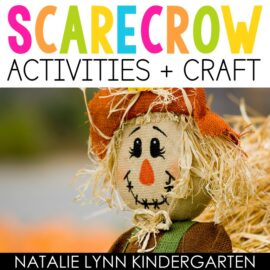
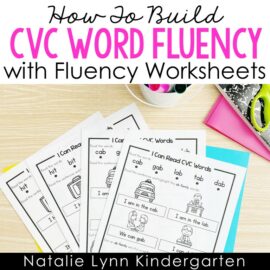
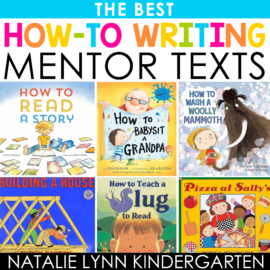

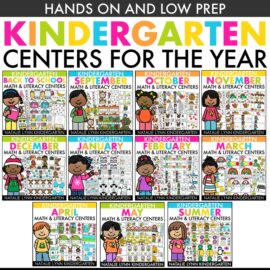
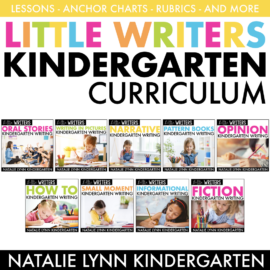
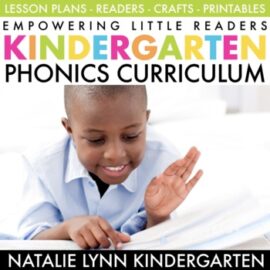
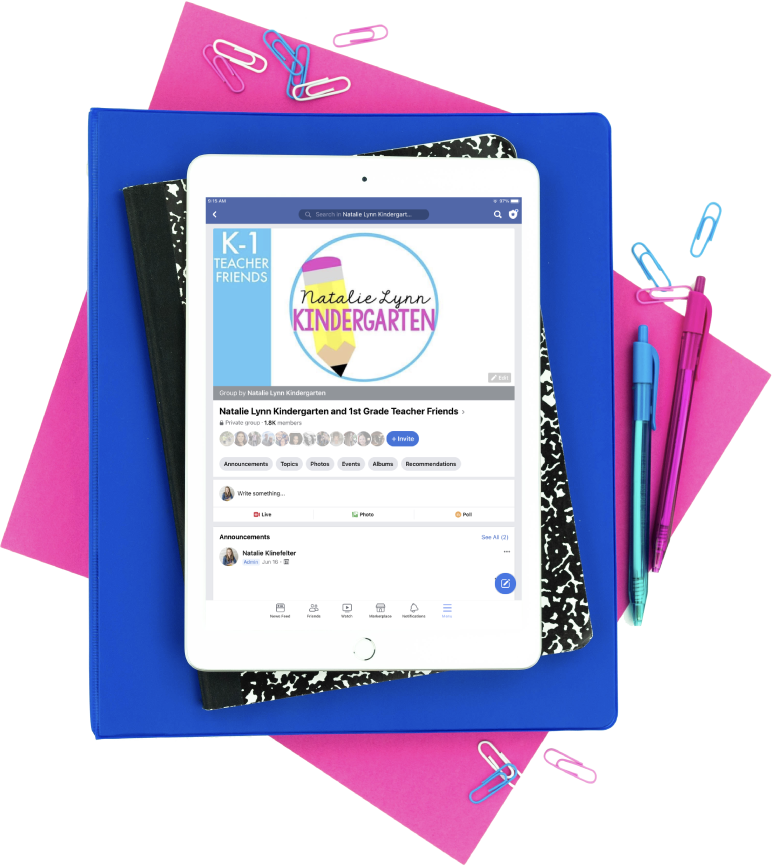

Help!!! I’m teaching kindergarten for the first time in September! I’ve taught 2nd and 3rd for the past 20 years. Where do I begin with my kindergarten class? I don’t know how to begin my year!! Where do I start?!? Thank you!
Hi! The beginning of K is allllll about procedures and routines! Assume that they don’t know anything. I have a beginning of the year resource that will plan out the first week of school for you: https://www.teacherspayteachers.com/Product/First-Week-of-Kindergarten-Lesson-Plans-Beginning-of-the-Year-Activities-3292976?st=455c976a02febce6a070ffb39e74a71e